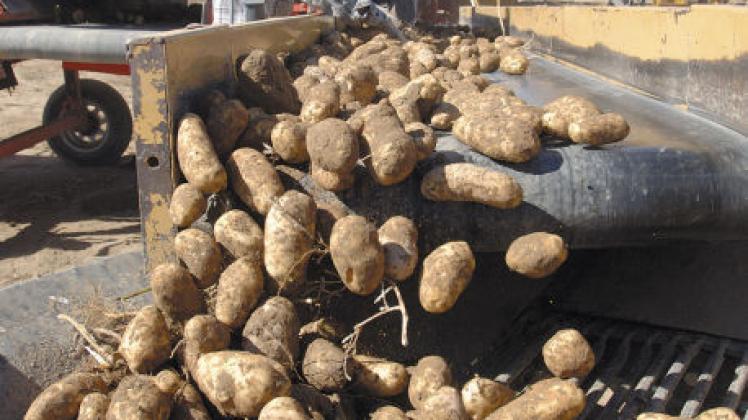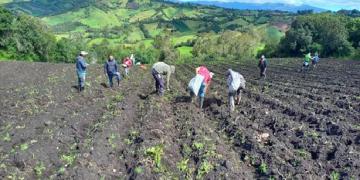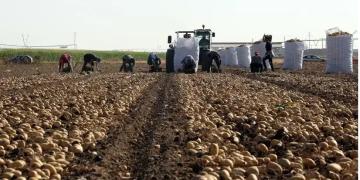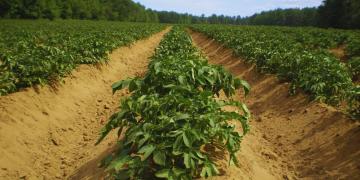EEUU: Potato Outlook Appears Bleak
BURLEY • Tall hay stacks and overflowing grain bins are sending farmers clear signals to look at alternative crops for the 2016 planting season.

Bruce Huffaker hopes they chose to idle acres rather than plant potatoes, but past history indicates otherwise.
“Our experience is that the relative price between wheat and potatoes is the best indicator of planting intentions,” Huffacker told growers and lenders during the University of Idaho’s Agricultural Outlook earlier this month. An October-to-December average price of $4.60 per bushel for wheat and an average potato price of $6 per 100-pound sack suggests U.S. potato farmers will plant 1.9 percent — or nearly 1 million acres — more potatoes in 2016.
But based on conversations he’s had with potato growers this month, he’s afraid the increase may be closer to 4 percent. And that could further depress a market that is already struggling. Huffaker is president of the North America Potato Market News Inc.
He described the 2015 potato market as one of the most interesting situations he’s seen in the last 20 to 25 years. Overall the U.S. spud crop was up 1.2 percent with most of the growth concentrated in the Midwest processing states. According to U.S. Department of Agriculture estimates, North Dakota was up 14 percent, Minnesota up 12.7 percent and Wisconsin up 12.2 percent.
Overall, the U.S. fall potato crop is projected to reach 408 million sacks, up 5 million sacks from 2014 and 18 million sacks over 2013.
“Given that we had too many potatoes last year (2014), that was a little disconcerting,” Huffaker said.
The Pacific Northwest crop, on the other hand, was down. Idaho is projected to be down 1.9 percent, with Washington-Oregon down 1.6 percent. Hot temperatures during harvest may have meant some potatoes were put into storage too warm and those quality losses could pull Idaho’s crop down as much as 3.7 percent.
Idaho production was just 417 sacks per acre in 2015. That works out to 8 sacks per acre below long-term production trend lines. When making his forecasts, Huffaker expects Idaho production will return to trend-line, which has been an increase of 4 sacks per acre year-over-year. If that holds true, Idaho producers could be looking at an average yield of 431 sacks per acre.
Even if the acreage increase is just 2 percent over last year, that could mean an additional 20 million sacks of potatoes to be marketed in 2016.
“Even if acreage holds steady, we’re setting ourselves up for a big price disaster,” Huffaker said. “To keep potato prices close to today’s level, next year’s acreage needs to come down three to four percent.”
At $6 per sack potatoes are below break-even costs for most producers, that price level is high enough to cover a portion of the operation’s overhead. And that’s where the temptation to switch from low-priced wheat or hay to potatoes comes in.
“This is very important for everyone to consider when making planting decisions,” Huffaker said. “It makes more sense to idle acres rather than shift to potatoes.”
But he knows growers are already making decisions. Many hay acres in the Upper Valley in eastern Idaho were plowed up this fall to be planted to a different crop in the spring.
Complicating the price outlook is that the potato chip market is up 10 percent while the fresh market is down nearly 6 percent. Chip potatoes are largely grown in the Midwest. Idaho, Texas and the Columbia Basin are largely responsible for the decline in fresh potato sales.
Some forecasters anticipate fresh sales could slump to the lowest level since World War II. Huffaker attributes the decline to more options in the produce section including an abundance of fresh potato choices.
Idaho requires that each of the 20 to 25 different Russet varieties sold be labeled individually, but marketers sell those varieties as an interchangeable commodity. However, low solid Russets don’t cook the same as high solid Russets.
“We don’t give the consumer any guidance for preparing those different varieties,” he explained. If a recipe doesn’t turn out the way they expect, they are not likely to be excited about buying fresh potatoes the next time they’re in the grocery store.
Fuente: http://magicvalley.com/business/agriculture/potato-outlook-appears-bleak/









